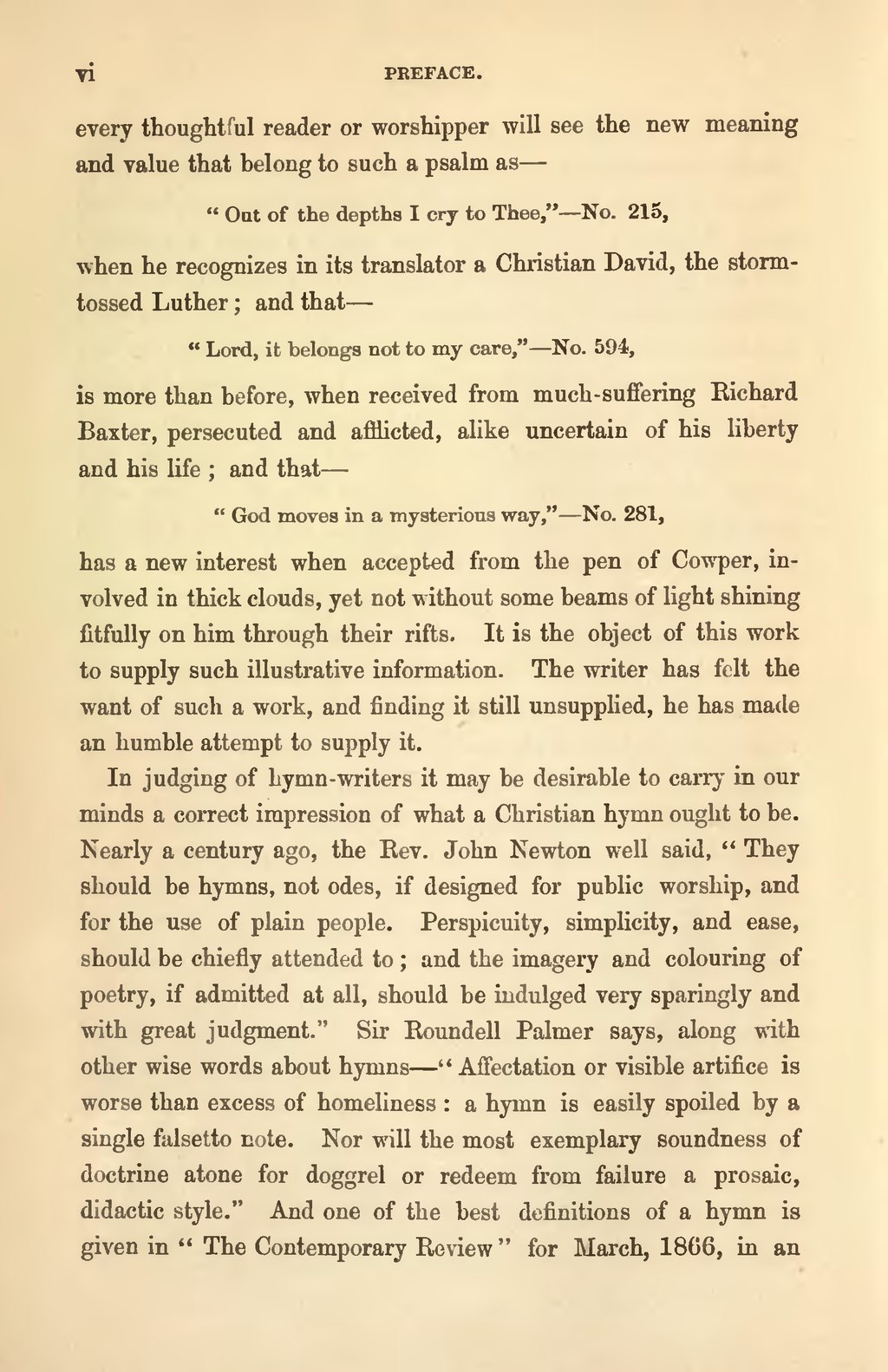every thoughtful reader or worshipper will see the new meaning and value that belong to such a psalm as—
" Out of the depths I cry to Thee,"— No. 215,
when he recognizes in its translator a Christian David, the storm-tossed Luther; and that—
" Lord, it belongs not to my care,"— No. 594,
is more than before, when received from much-suffering Richard Baxter, persecuted and afflicted, alike uncertain of his liberty and his life; and that—
" God moves in a mysterious way,"—No. 281,
has a new interest when accepted from the pen of Cowper, involved in thick clouds, yet not without some beams of light shining fitfully on him through their rifts. It is the object of this work to supply such illustrative information. The writer has felt the want of such a work, and finding it still unsupplied, he has made an humble attempt to supply it.
In judging of hymn-writers it may be desirable to carry in our minds a correct impression of what a Christian hymn ought to be. Nearly a century ago, the Rev. John Newton well said, " They should be hymns, not odes, if designed for public worship, and for the use of plain people. Perspicuity, simplicity, and ease, should be chiefly attended to; and the imagery and colouring of poetry, if admitted at all, should be indulged very sparingly and with great judgment." Sir Roundell Palmer says, along with other wise words about hymns— " Affectation or visible artifice is worse than excess of homeliness: a hymn is easily spoiled by a single falsetto note. Nor will the most exemplary soundness of doctrine atone for doggrel or redeem from failure a prosaic, didactic style." And one of the best definitions of a hymn is given in " The Contemporary Review" for March, 1806, in an
